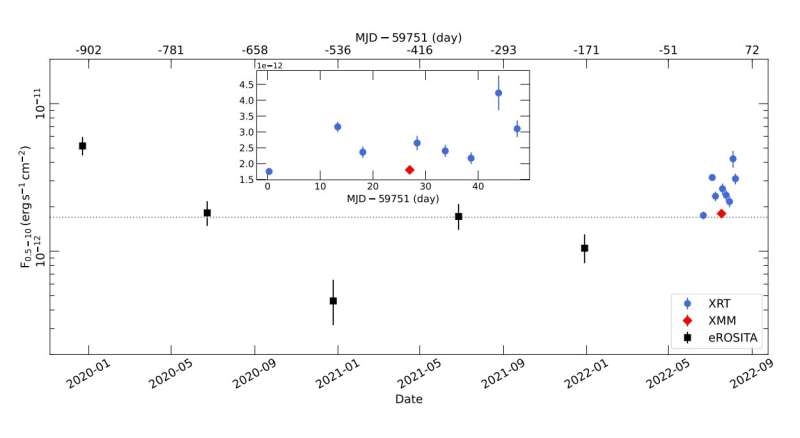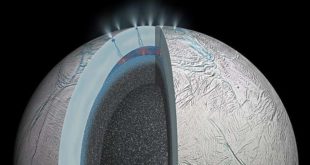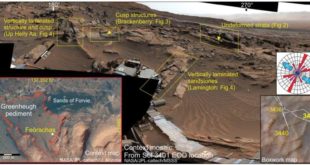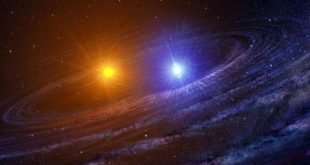
Using various space telescopes, an international team of astronomers have observed a recently detected luminous quasar known as SMSS J114447.77-430859.3, or J1144 for short. Results of the observational campaign, available in the July 2023 edition of Monthly Notices of the Royal Astronomical Society, shed more light on the properties of this source.
Quasars, or quasi-stellar objects (QSOs) are active galactic nuclei (AGN) of very high luminosity, emitting electromagnetic radiation observable in radio, infrared, visible, ultraviolet and X-ray wavelengths. They are among the brightest and most distant objects in the known universe, and serve as fundamental tools for numerous studies in astrophysics as well as cosmology. For instance, quasars have been used to investigate the large-scale structure of the universe and the era of reionization. They also improved our understanding of the dynamics of supermassive black holes and the intergalactic medium.
J1144 was detected in June 2022 at a redshift of 0.83. It has a bolometric luminosity of about 470 quattuordecillion erg/s, which makes it the most luminous quasar over the last 9 billion years of cosmic history. It is also the optically brightest (unbeamed) quasar at a redshift greater than 0.4.
It is estimated that the mass of the black hole in J1144 is approximately 2.6 billion solar masses. This value, together with the high bolometric luminosity, yields an Eddington ratio at a level of 1.4 for this quasar.
A group of astronomers led by Elias Kammoun of the University of Toulouse, France, has conducted X-ray observations of this quasar using Spektr-RG, Swift, NuSTAR and XMM-Newton space telescopes. These four space observatories allowed them to gain more insights into the properties of J1144.
The observational campaign found that J1144 exhibits an X-ray variability by a factor of about 10 within a year. Moreover, the results indicate also a shorter timescale variability of the order of approximately 2.7 within 40 days. According to the authors of the study, the large X-ray variability is due to intrinsic changes in the X-ray luminosity of the source accompanied with changes in the absorption in the line of sight.
The observations indicate that J1144 seems to accrete at a rate larger than 40% of the Eddington limit. However, the astronomers noted that If the black hole spin is relatively low, the accretion rate can even exceed the Eddington limit.
The researchers underlined that the X-ray and optical properties of J1144 are different from many high-Eddington sources. They suppose that this source may be a standard radio-quiet quasar rather than a high-Eddington quasi-stellar object.
The authors of the paper added that deeper X-ray and ultraviolet/optical observations of J1144 are needed to draw final conclusions about the nature of this source and its variability.
More information:
E S Kammoun et al, The first X-ray look at SMSS J114447.77-430859.3: the most luminous quasar in the last 9 Gyr, Monthly Notices of the Royal Astronomical Society (2023). DOI: 10.1093/mnras/stad952
© 2023 Science X Network
Citation:
Astronomers explore a recently discovered luminous quasar (2023, May 24)
retrieved 24 May 2023
from
This document is subject to copyright. Apart from any fair dealing for the purpose of private study or research, no
part may be reproduced without the written permission. The content is provided for information purposes only.
 Innovation Discoveries Latest Scientific Discoveries in Innovation
Innovation Discoveries Latest Scientific Discoveries in Innovation



